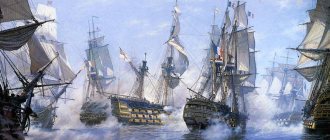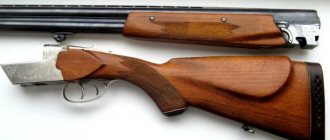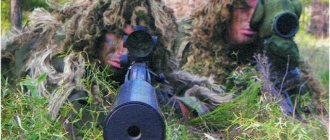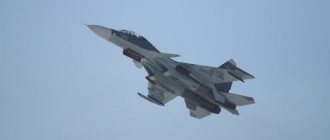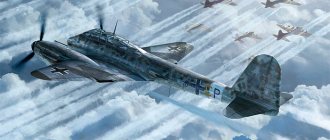Among the combat aircraft of the Second World War, there are many aircraft that have a controversial and interesting history. On the one hand, we can talk about technical perfection, on the other, there is a clear failure of the designers who tried to create a combat vehicle of an unconventional design. A striking example is the fate of the American P-39 Airacobra fighter aircraft. Initially created as an experiment, with a non-standard layout for aircraft of this type, the fighter ultimately managed to take its rightful place in the skies on the Eastern Front. It was the Soviet-German front that became the theater of military operations, where the airacobra gained recognition and was used en masse. Everything for this aircraft did not start as rosy as its creators, the designers of the American aircraft manufacturer Bell Aircraft, had planned.
Airacobra
The history of the creation of the P-39 Airacobra fighter
The history of the P-39 Airacobra fighter began in 1936, when, under the leadership of R. Wood and H. Poyer, the Model 3 aircraft project was created. A feature of the project was the installation of the engine not in front, but at the center of mass of the fuselage, with the propeller driven through a long shaft. This arrangement made it possible, firstly, to improve the maneuverability of the aircraft, and secondly, to place more powerful weapons in the nose.
The Model 3 had a big drawback - the pilot was located behind the engine and had poor visibility from the cockpit. Then the design was redesigned and the cabin was moved forward, calling the project “Model 4”. It was this project that interested the Army Air Corps; on October 7, 1937, the company received an order for the production of a prototype under the designation XP-39.
In 1938, the unusual fighter passed tests surprisingly easily (albeit with modifications) and was recommended for production under the designation P-39 “Airacobra” (originally the P-45). The American Air Force thus received not only the most “extravagant” US combat aircraft of the Second World War, but also the most powerful one - it’s no joke, to have it already in the late 1930s. a fighter whose “main caliber” is not the usual 2-6 7.62 mm machine guns, but 2 x 12.7 mm machine guns and 1 x 37 mm cannon!
P-39 Airacobra fighter
Production of the P-39 continued until August 1944. A total of 9,558 aircraft of various modifications were manufactured. Of these, 4924 were delivered to the USSR. P-63 Kingcobra fighter was developed especially for the Red Army . The P-39 was in service in the United States until April 1944, Italy until June 1945, and France until 1947. In the USSR, some aircraft were operated until 1953.
Parents' house
Among the most effective Soviet pilots of that war, Grigory Rechkalov, according to Wikipedia, occupies fourth position: he shot down 56 enemy aircraft personally, 6 as part of a group. Ivan Kozhedub has 64 aircraft destroyed by him personally, Alexander Pokryshkin has 59, Nikolai Gulaev has 57. But there are other data according to which Grigory Rechkalov should have 61 victories on his personal account, including three aircraft he destroyed in beginning of the war and were not recorded on it due to the loss of staff documents. The situation is common among our pilots; there is evidence that the same Alexander Pokryshkin spoke about more of his victories, but it was impossible to prove their fact. But the German aces did not hesitate to take credit for any dubious victories, hence the incredible, seemingly unrealistic number of enemy aircraft they shot down.
Our ace was also modest in his communication.
– I met with Grigory Andreevich twice. – says Yuri Sudakov. – The last one was in 1965, at a reception for graduates of the Air Force Academy. He asked where I was assigned and wished me good luck. I remember him being very open in his communication, no swagger or arrogance. Although imagine: at the age of 23 he became a Hero of the Soviet Union, at 24 he received the second Hero star, at more than thirty he became a major general of aviation. And at that time I had just received the rank of major. It would seem that there was such a difference in age and position, but we talked like ordinary people. I have the kindest memories from meetings with him.
The parental home of Grigory Rechkalov was moved to the territory of the museum complex in Zaykovo. Photo: Alexander Isakov
They keep the memory of their fellow countryman on Irbit soil. In 2015, a renewed museum complex dedicated to him was opened in Zaykovo; previously it was located in the school where the future Soviet ace once studied. The house of the Rechkalov family was also moved to the territory of the museum complex.
– Grigory Andreevich came to his native places many times. First of all, he always came to his parents’ house, although strangers had been living there for a long time, says the director of the UIA Cultural Center named after. twice Hero of the Soviet Union Grigory Rechkalov" Elena Ermolaeva .
According to her, the Grigory Rechkalov Museum is especially crowded these days. On the day of celebrating the ace's anniversary, it will become the main venue for the celebrations. Their culmination should be the flight of military aircraft over the village in which our illustrious fellow countryman was born. Another place of celebration will be the village of Bobrovsky, in the cemetery of which next to the grave of his mother, Tatyana Petrovna , Grigory Rechkalov was buried, although he died in Moscow in 1990. A bust of twice Hero of the Soviet Union Grigory Rechkalov will be unveiled on the territory of the Bobrovskaya School. The bust in Zaikovo, the hero’s homeland, was unveiled in 1949.
BY THE WAY
In the museums of the Sverdlovsk region you can see two restored Airacobras.
One P-39 is located in the UMMC Museum of Military Equipment in Verkhnyaya Pyshma, the other is in the Cultural Center named after twice Hero of the Soviet Union Grigory Rechkalov in the village of Zaykovo. They repeat the designations that were applied to Rechkalov’s car: stars according to the number of victories, on the tail section there are large letters RGA - the pilot’s initials. As well as a red stripe on the top of the keel and a red propeller shaft - characteristic designations of the vehicles of the 16th Guards Regiment. Prepared in accordance with the criteria approved by the order of the Department of Information Policy of the Sverdlovsk Region dated 01/09/2018 No. 1 “On approval of the criteria for classifying information materials published by government agencies of the Sverdlovsk Region, in respect of which the functions and powers of the founder are exercised by the Department of Information Policy of the Sverdlovsk Region, as socially significant information."
- Published in No. 23 of 02/08/2020
The design of the P-39 Airacobra fighter
The P-39 Aerokora is an all-metal cantilever low-wing aircraft with a semi-monocoque fuselage. The wing is straight, three-spar, trapezoidal in plan with rounded tips. The wing mechanization consisted of Frize-type flaps and slats. The landing gear is retractable, tricycle with a nose strut. The engine is located behind the pilot's cabin and is connected to a three-blade (on the P-39Q-21-25 - four-blade) propeller by a shaft about 3 m long, passing under the cabin floor. The fuel supply was located in the wing tanks.
Access to the cabin was through car-type doors. The composition of the weapons varied depending on the modification and included: 7.62 mm machine guns, 12.7 mm Colt-Browning machine guns, 20 mm Hispano M1 cannons, 37 mm M4 cannons.
Drawing of the P-39 Airacobra fighter
Modifications of the P-39 Airacobra interceptor fighter
- XP-39 - prototype. It was distinguished by a V-1710-17 engine with a power of 1150 hp. with a B-5 turbocharger. There were no weapons. First flight April 6, 1938.
- XP-39B is a prototype modified based on the results of wind tunnel tests. It was distinguished by the shape of the canopy, the wings of the landing gear niches, the air intakes of water and oil radiators in the wing root, the reduced wingspan and elongated fuselage, the V-1710-39 engine with a power of 1090 hp, and the absence of a turbocharger. First flight November 25, 1939.
- XP-39E (“model 23”, XP-76) - a prototype for testing the Continental V-1430-1 engine. Due to the unavailability of the engine, a V-1710-47 with a power of 1325 hp was installed. It was distinguished by a wing with a laminar profile of increased span. First flight February 21, 1942. 3 aircraft were manufactured. The P-63 was developed on his Bose.
- YP-39 (“model 12”) - pre-production. It featured a V-1710-39 engine and an enlarged keel. The armament consisted of a 37 mm cannon, 2 12.7 mm machine guns, 2 7.62 mm machine guns. 13 aircraft were manufactured.
- YP-39A - high-rise (project). It was distinguished by the V-1710-31 engine with a power of 1150 hp.
- P-39C ("model 13", P-45) - the first production version. It was distinguished by a V-1710-35 engine with a power of 1150 hp. The armament consisted of 4 fuselage 7.62 mm machine guns. First flight in January 1939. In 1939, 20 aircraft were manufactured.
- P-39D (“model 14”) - modified. It was distinguished by frontal armored glass, enhanced armor protection, protected tanks, a reduced fuel reserve, and the ability to suspend a 330-liter PTB. The armament consisted of 2 synchronized 12.7 mm machine guns, 4 wing-mounted 7.62 mm machine guns, and a 37 mm M4 cannon (or 20 mm M1). Produced since February 1941. 404 aircraft were produced.
- P-39D-1 (“model 14A”) - fighter for the USSR. It was distinguished by a slight fairing of the keel. The armament consisted of a 20 mm cannon, 2 12.7 mm machine guns, 4 7.62 mm machine guns. 336 aircraft were manufactured.
- P-39D-2 (“model 14A”) - with a V-1710-63 engine producing 1325 hp. with 2:1 gearbox. It was distinguished by a 37 mm cannon. 158 aircraft were manufactured for the USSR.
- P-39D-3, D-4 - attack aircraft. They were distinguished by a V-1710-35 engine, armored water and oil radiators, and 2 cameras in the tail section.
- The P-39F ("model 15B") is a variant of the P-39D with an Aeroprop propeller. It featured individual engine exhaust pipes instead of twin ones. 229 aircraft were manufactured. P-39F-2 - attack aircraft. It was distinguished by armored water and oil radiators, 2 cameras in the tail section.
- TP-39F - training. It was distinguished by a second cabin in front, dual controls, and lack of weapons. 1 aircraft manufactured.
- P-39L-2 - photo reconnaissance aircraft. 11 aircraft were converted.
Characteristics of P-39 Ecocobra P-39Q-5
A country:USAType:Frontline fighterYear of issue:1938Crew:1 personEngine:V-1710-85 with a power of 1200 hp.Maximum speed:602 km/hPractical ceiling:10700 mRange of flight:840 kmEmpty weight:2568 kgMaximum take-off weight:3778 kgWingspan:10.37 mLength:9.20 mHeight:3.78 mWing area:19.81 sq.m.Weapons:1x 20 mm cannon, 4x 12.7 mm machine guns.
Specifications shown for model P-39Q-5
- P-39M (“Model 26D”) - with a V-1710-67 engine producing 1,200 hp. Produced since November 1942. 240 aircraft were manufactured. P-39M-1 - with a V-1710-83 engine producing 1200 hp.
- P-39N is the first option. 500 aircraft were produced.
- P-29Q-1BE - with a fuel supply of 330 liters and armor weighing 105 kg.
Flight performance
Let's compare the characteristics of the late Airacobra with one of the best Soviet fighters of the mid-war - La-5FN and one of the most popular series of Messerschmitt-109.
| P-39Q | La-5FN | Bf.109G-6 | |
| Wingspan, m | 10,36 | 9,80 | 9,90 |
| Maximum take-off weight, kg | 3750 | 3168 | 3400 |
| Maximum speed, km/h | 605 | 648 | 618 |
| Rate of climb | 762 | 1064 | 690 |
| Range, km | 845 | 1000 | 560 |
| Practical ceiling, m | 10620 | 11200 | 11500 |
| Armament | 37mm M4 cannon, 4x12.7mm Browning machine gun | 2x20mm ShVAK cannons | 20mm MG151/20 cannon, 2x13mm MG131 machine gun |
It is worth saying that the superiority of the Airacobra over the early Bf.109 in terms of maneuverability was noticed even when the fighter was tested in Britain. And the Gustavs, and especially the later ones, are generally considered to be the Messer model that was not distinguished by maneuverability. The La-5, superior to the P-39 in terms of speed, was also distinguished by its ease of construction, development and maintenance. It is significant that later the gun of the German aircraft was replaced by a 30mm MK108 - similar in ballistics and specific application to the M4.
The Airacobra turned out to be a completely successful and effective aircraft, and if we consider the P-63 to be another modification of the basic design, then it was extremely durable for wartime. But the success of its application depended on several specific factors.
Firstly, the fighters had to operate at low altitudes. Secondly, well-trained pilots had to fly the difficult-to-fly aircraft. Thirdly, the pilots had to be good shooters in order to hit planes with targeted shots from a cannon at a low rate of fire. It was only the Airacobra that flew with maximum efficiency, which was achieved in the USSR.
Combat use of the P-39 Airacobra fighter
The P-39 Airacobra fighter began entering service with the US Army in 1940. In 1941, Airacobras began to arrive in the UK, but they did not take root there, because... had a low altitude, while British pilots had to fight at an altitude of about 5000 m. Some of the planes were sent to the colonies, some to the Soviet Union. Free France received 165 aircraft. After the signing of the armistice in 1943, Italy began to receive P-39s.
In the Soviet Union, the “airacobra” took root well - battles at the front were fought mainly at low altitudes, and the most common task of fighters was to escort front-line bombers and attack aircraft, especially since the P-39 itself made a fairly good light attack aircraft.
It is known that, due to its very unusual balancing, the Airacobra was difficult to control for beginners, but for experienced pilots it was a good choice - the Soviet ace three times Hero of the Soviet Union A.I. Pokryshkin won 48 of his 59 on the P-39N victories
Source: compilation based on open sources on the Internet, as well as “Fighters of the Second World War 1939-1945”, AVIAM, 1994.
Despite the circumstances
Grigory Rechkalov began his journey to heaven on the Ural soil. He was born on February 9, 1920 in the village of Khudyakovo, now the village of Zaykovo. In his native village, Grisha completed four classes of primary school, and in 1931 the Rechkalov family moved to the village of Bobrovskoye near Sysert. There he began studying at the Sverdlovsk flying club of OSOAVIAKHIM, and in 1937, on a Komsomol ticket, he was sent to the Perm Military Pilot School.
“It was the time when the country called out: “Komsomolets - get on the plane!” and all the boys dreamed of aviation. Our flying club raised 17 future Heroes of the Soviet Union, and among them was Grigory Rechkalov,” says retired aviation major general, chairman of the Sverdlovsk regional public organization of war, labor, combat veterans, public service, pensioners, member of the Public Chamber of the Sverdlovsk region Yuri Sudakov .
Very often circumstances turned against Grigory Rechkalov, but he persistently overcame them. So, on June 22, 1941, he returned to the location of his 55th Fighter Aviation Regiment, having in hand a medical commission’s conclusion that he was unfit to fly. Grigory Rechkalov did not distinguish colors. On the way, I learned about the beginning of the war and rushed to the airfield. The regiment was already engaged in combat operations, suffered losses, and needed pilots. The regiment commander, after listening to the report of his subordinate, asked: “Can you distinguish a Soviet plane from an enemy one?” “I’ll tell you the difference!” - came the answer.
Grigory Rechkalov made his first combat missions on the I-153 biplane, also called the “Chaika”, with the number “13” on the tail. The figure turned out to be lucky for him; on June 27, 1941, he shot down the German Messerschmitt 109. It seemed incredible: a pilot without combat experience in a wooden, outdated biplane destroys a modern German aircraft. But Rechkalov was distinguished by courage, an ideal sense of the machine, and an instant reaction to a changing situation.
In July 1941, while escorting attack aircraft, his I-16 fighter came under fire from the ground, Grigory Rechkalov received a serious leg wound and had difficulty making it to the airfield. Next - treatment in hospitals, three operations. As soon as the wound began to heal, he began to ask to go to the front. The wound was serious, so after a relative recovery the pilot was assigned to a reserve regiment. Having learned that they were flying U-2s there, he turned around and went back to the district air force headquarters, demanding to be sent to a fighter regiment. By hook or by crook, in March 1942, he returned to his native regiment, which by that time had become the 16th Guards Fighter Aviation Regiment (GIAP), which fought on the Southern Front, then on the North Caucasus Front. There, Grigory Rechkalov brought the number of his victories to six.
Grigory Rechkalov (below) and Alexander Pokryshkin at an anti-aircraft gun. 1943 Photo: Cultural Center named after. G.A. Rechkalova

